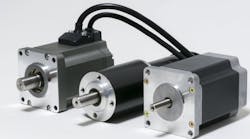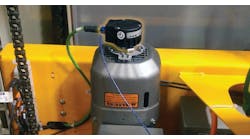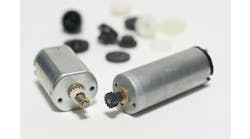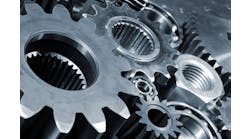Servo and step motors are widely used in industrial automation applications. Each type of motor has distinct characteristics that make it better-suited for specific tasks. The decision between the two is influenced by the specific application requirements, which include precision, speed, torque, cost and environmental conditions. Looking at the differences, applications and factors to consider will help you make an educated decision.
1. Servo motors are a type of motor designed to provide precise control over the speed and position of a mechanical system. These motors are equipped with a feedback system that allows them to precisely change their position in response to external inputs. A servo motor's basic components are a motor, a feedback sensor, such as an encoder, and a control system. The control system constantly modifies the motor's speed and position based on sensor data to maintain precise control over the system's motion.
2. Step motors, also known as stepper motors, are a type of motor that rotates in small, precise increments, or steps. These motors are commonly used in applications requiring precise positioning, such as robotics or computer-numerical-control (CNC) machines. Step motors are made up of a rotor and a stator, with the rotor rotating in response to the magnetic fields produced by the stator. The motor's motion is controlled by sending a series of electrical pulses to the coils of the motor, which cause the rotor to step forward in small increments.
While servo and step motors can both provide precise control over a system's motion, they are designed for different applications and have different strengths and limitations. When deciding which type of motor to use for a specific application, it's critical to understand the differences between them.
Servo motors are commonly used in applications that require precise control over the motion of a mechanical system.
1. Robotics: Servo motors are frequently used in robotics applications that require precise control of the position and movement of robotic arms or other mechanisms. Robots can perform complex and precise movements with the feedback control provided by servo motors.
2. Industrial automation: In industrial-automation applications such as conveyor systems, packaging machines and assembly lines, servo motors are commonly used. They are ideal for applications that require fast and precise material or component movement.
Overall, servo motors are best-suited for applications that require precise control of a mechanical system's motion. They are ideal for applications requiring precision, speed and repeatability.
Step motors are frequently used in applications requiring precise control over the positioning of a mechanical system.
1. CNC machines: Step motors are commonly used in CNC machines such as milling machines and lathes. Step motors provide the necessary accuracy and repeatability for these machines, which require precise control over the positioning of the cutting tool.
2. Robotics: Step motors are frequently used in robotics applications requiring precise control of robotic arms or other mechanisms. They are ideal for high torque and precise positioning applications.
3. Textile machinery: Step motors are used to control the movement of fabric in textile machinery, such as knitting machines and embroidery machines. Step motors' precise control is critical to ensuring the accuracy and quality of the finished product.
Overall, step motors are best-suited for applications that require precise control over the positioning of a mechanical system. They are ideal for applications requiring high accuracy, repeatability and torque.
The power consumption of the motor is also an important consideration. Servo motors typically consume more power than step motors because they require a more complex control system that includes feedback mechanisms to monitor position, speed and torque. If power consumption is an issue, a step motor may be a better choice because it requires less power and can often deliver the required torque at lower speeds. Another factor to consider is the size and weight of the motor. Because of the additional components required for the control system, servo motors are typically larger and heavier than step motors, if space is limited or weight is an issue.
The choice between a servo motor and a step motor is determined by the application requirements. Servo motors are more precise and have a more complex control system, making them ideal for high-speed, low-torque applications. Step motors are less precise, but they are easier to control and are ideal for high-torque, low-speed applications. When deciding between the two, consider precision, speed, torque, cost, environmental conditions and support. A hybrid system may be the best option in some cases. Finally, choosing the right motor ensures that the application gets the best performance and efficiency.





